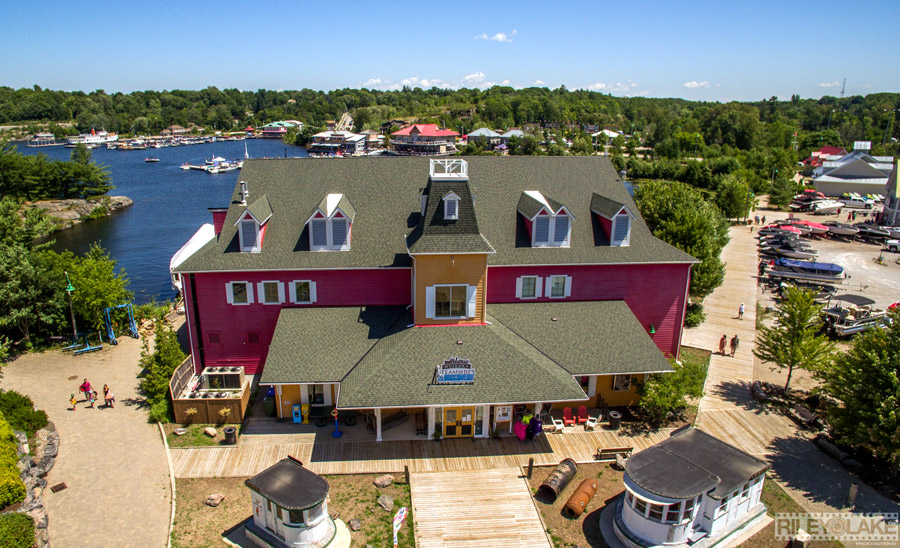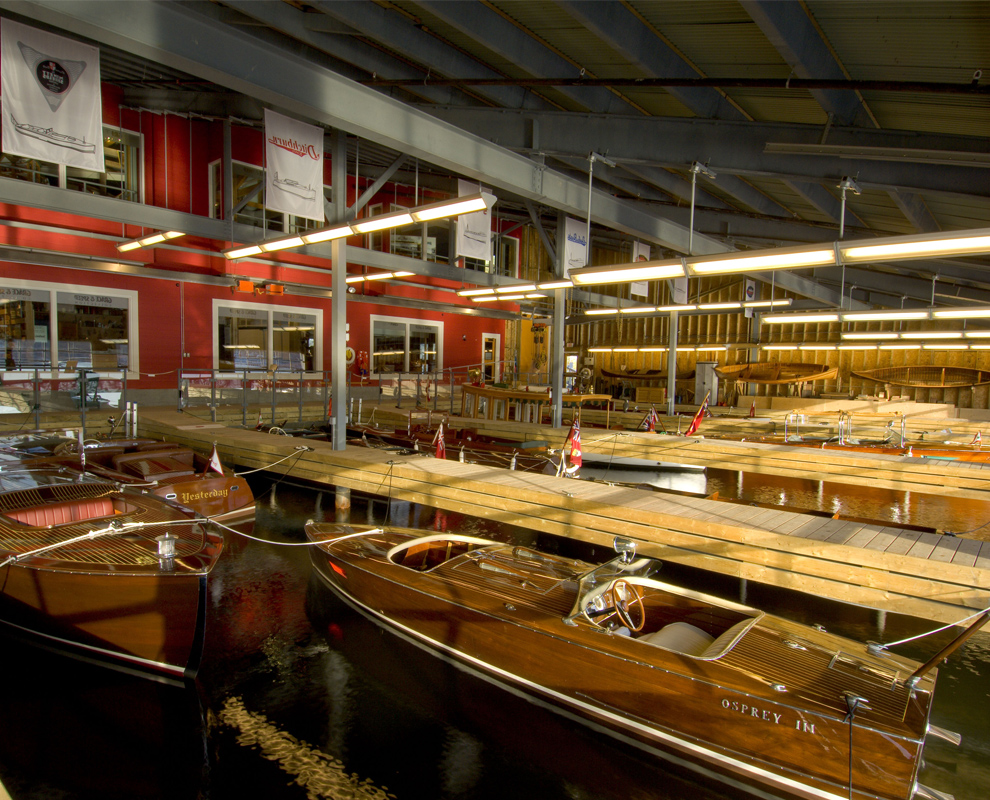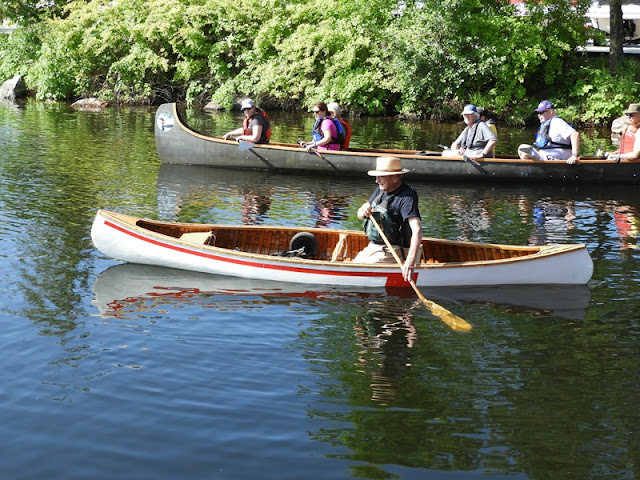Photo Credit: Muskoka Steamship and Discovery Centre
It's mostly focused on the steamships that plied the lakes in the region as well as the wooden motor boat tradition in the area, but their awesome in-water boathouse also features some historic canoes. They've got all wooden Peterboroughs dating to the later 1890s, two birchbark canoes, very interesting Walter Dean racing canoes among others all mounted on displays where you can touch and get real close.
Photo Credit: Muskoka Steamship and Discovery Centre
Photo Credit: Alex Guthro
The paddling group launched from the docks on the rear of the building for an informal tour of Gravenhurst Bay. Included was a large carbon-kevlar voyageur canoe powered by seven folks from the local canoe club. A few kayaks accompanied the group. Well known Temagami expert and winter camper Craig MacDonald from Dwight, ON brought along his 20 foot canoe recently finished with a dacron fabric skin. Here's my newly canvassed 14' Playmate floating nice and dry...
Photo Credit: Alex Guthro
Some of the group ready to depart
Photo Credit: Alex Guthro
C. MacDonald's Cedar Dacron 20 footer
Photo Credit: Alex Guthro
Paddler Extraordinaire Ron Riddell
Photo Credit: Alex Guthro
We learned about the logging history of the bay, the location of WW1 POW camp for German Officers and the modern day development pressures happening in the area.
Back at the centre, some fellow volunteers with the Wooden Canoe Heritage Association worked our booth. Here's Bill showcasing two paddles he brought with him. The one on the left is 100+ year old paddle that his belonged to his grandfather. When Bill was in his twenties, he carved a copy. Both were made from clear spruce and were very light given their overall size.
Bill's paddle belonging to his Grandfather (left) and his copy made in his 20s
Photo Credit: Alex Guthro
I brought along my display of historic paddle designs. Here's Ron getting a feel for the Krieghoff replica paddle.
Talking historic paddles with Ron
Photo Credit: Alex Guthro
Here's a final photo of the WCHA team and Ron at our shaded booth.
Photo Credit: Alex Guthro


























